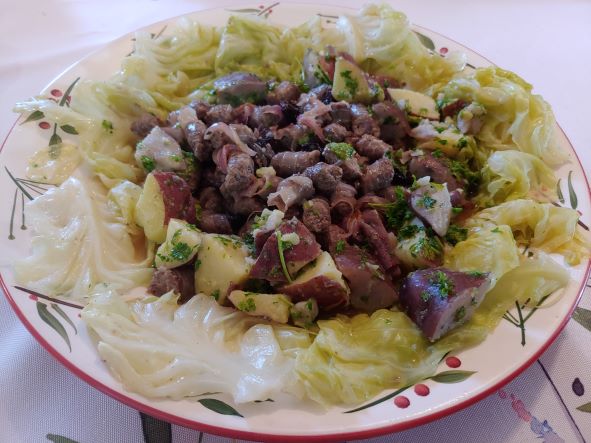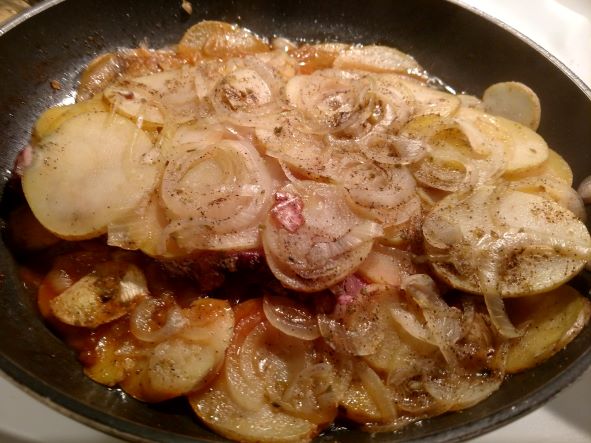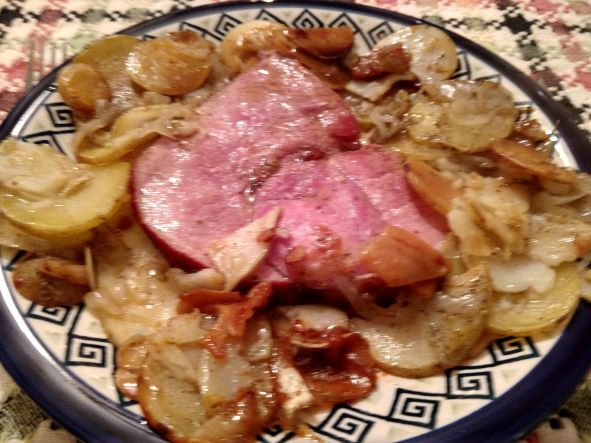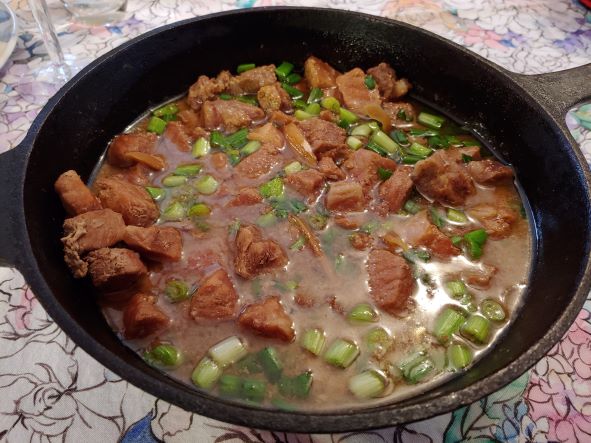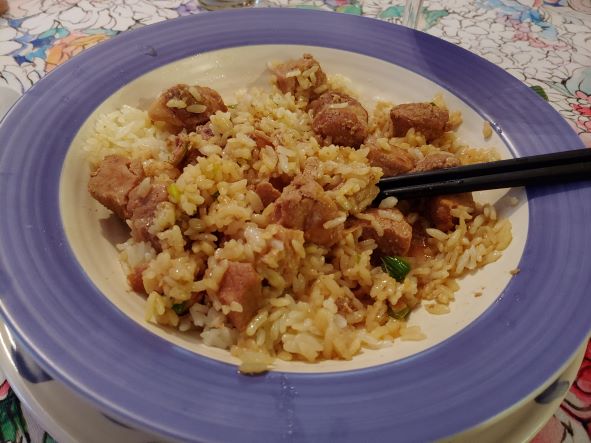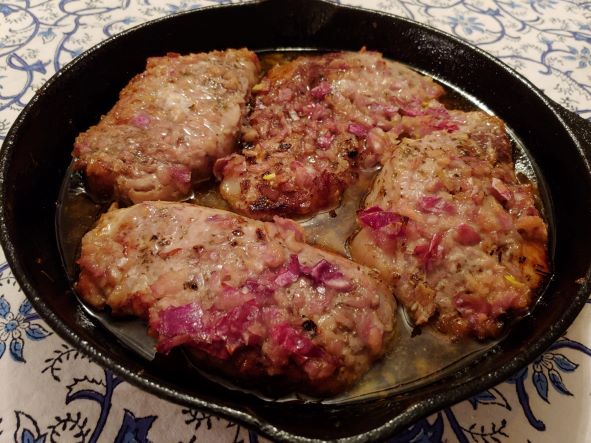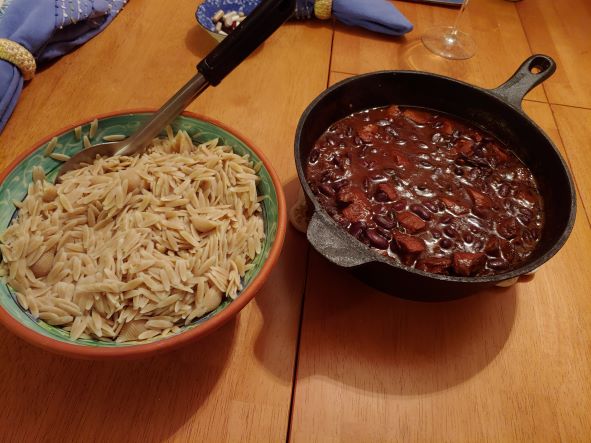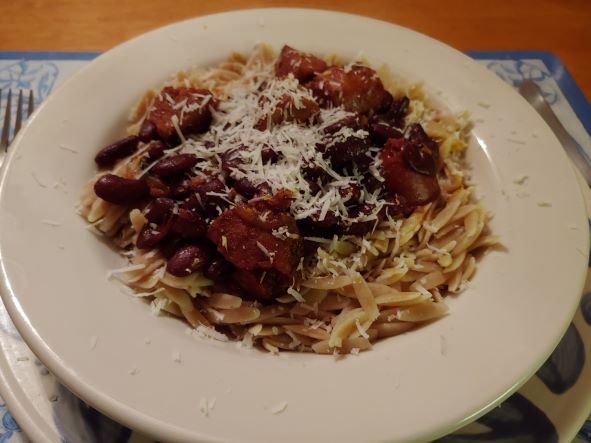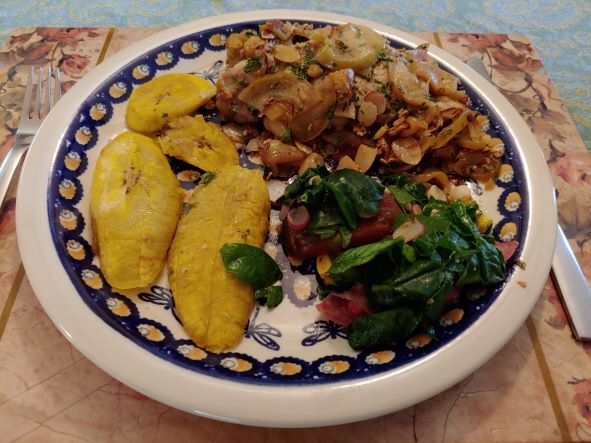In Nuyorican cuisine it is common to add raisins to certain meat recipes. Think of pasteles (root plants stuffed with meat) and carne guisada (beef stew). We also add it to sausage. In this case the recipe given: Sarchicha con Cebello y Uva (Sausage with Onion and Raisins). This is a simple dish to prepare. It’s just sausage cooked with onion and raisins, to which we add garlic, salt, pepper and a little white wine, that’s it. Normally, we pair this dish with white rice. In my family we like it with potatoes or bianda (root plants like cassava, pumpkin, green bananas, etc.). This time around we serve it on a bed of steamed cabbage and parsley potatoes and it was great.
Be aware that we refer to sausage as “sarchicha.” I’ve been informed that this is a colloquialism. If you look it up in an English-Spanish dictionary, it refers to sausage as “embutidos.” Back on the block, we never beard of this embutidos thing. To us it was always sarchicha or sarchichas (plural). And that’s what we call this recipe, end of story.
In Latino culture, the sausage used would be chorizo, the spicy Spanish version. But you can substitute beef, pork, chicken or turkey sausage. In my family, we are partial to lamb, and that’s what is used in this recipe. Look, even if it’s Libby’s canned sausage, you’re still gonna love this dish.
SARCHICHA CON CEBOLLA Y UVA
(Sausage with Onion and Raisins)
Ingredients:
2 pounds fresh kielbasa lamb sausage
3 tablespoons olive oil
2 tablespoons butter
1 medium onion, peeled and sliced into thin rings
2 cloves garlic, peeled and minced
2 tablespoons black raisins or more to taste
Salt and black ground pepper to taste
1/3 cup dry white wine
Instructions:
- Remove sausage casing if it has such. Rinse sausage links under cold running water and pat dry with paper towels. Then sliced into 1/4-inch rounds.
- In a large skillet or fry pan, heat olive oil and butter. Add sausage and onion. Stir fry on medium-high heat until sausage is browned and onion is soft. Add garlic and cook 2 minutes more. Season with salt and pepper.
- Stir in raisins and cook for 2 minutes. Lower heat, cover and simmer 4 minutes.
- Add wine to pan and cook over high heat, stirring, until most of the wine has been absorbed. Serve immediately.
Yield: 4-6 servings.
